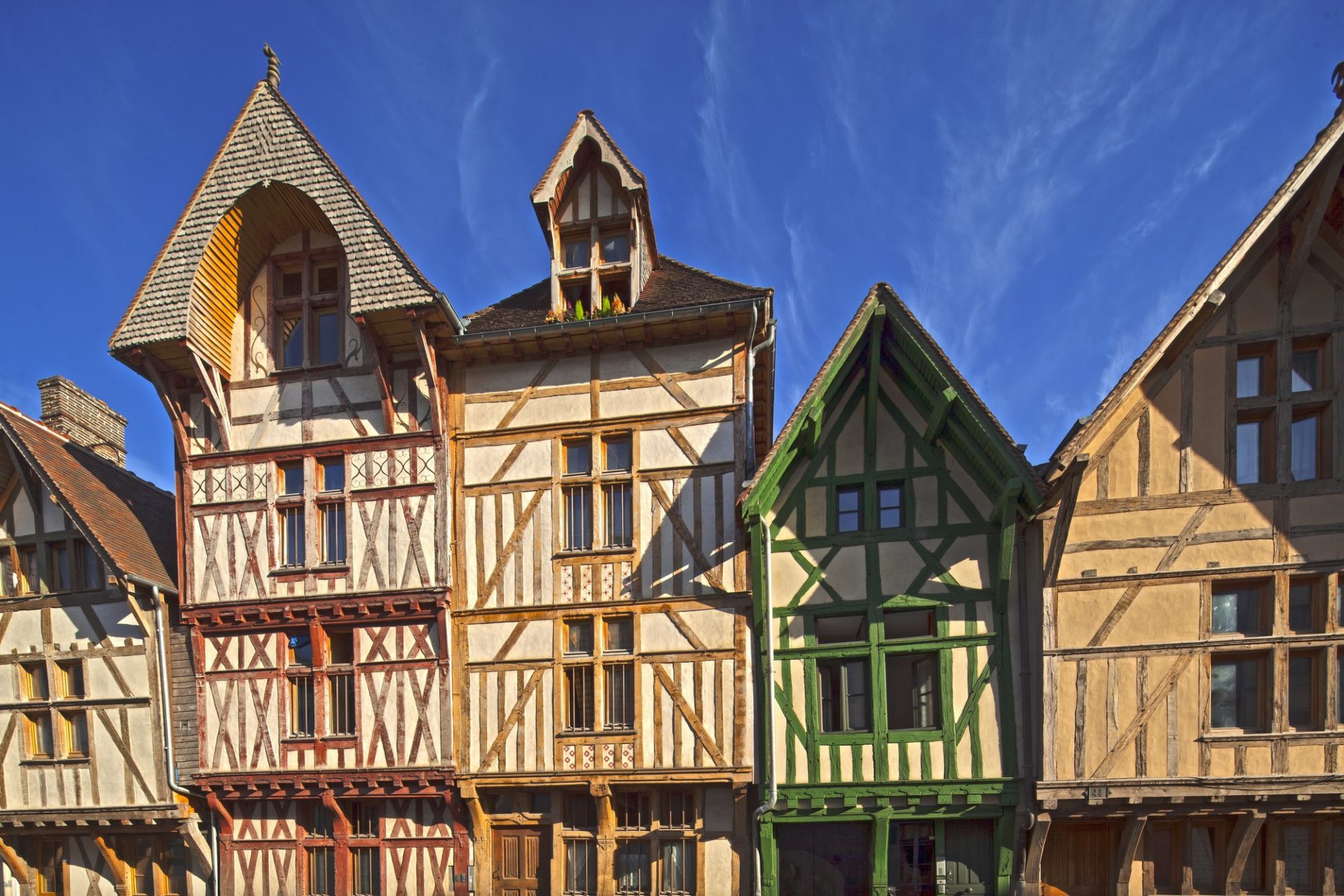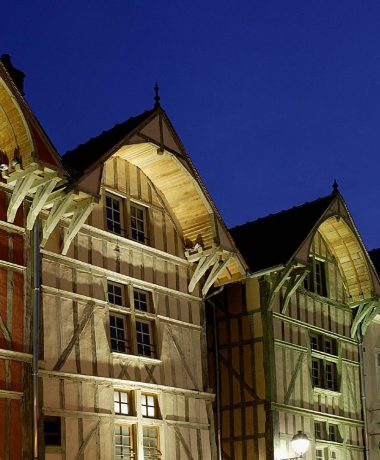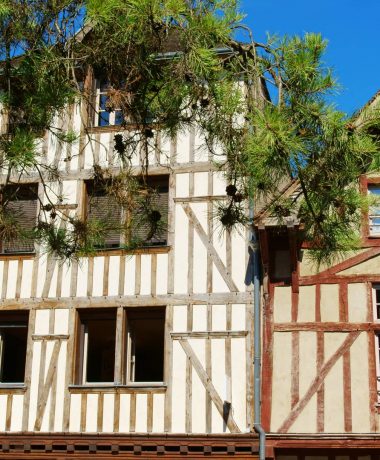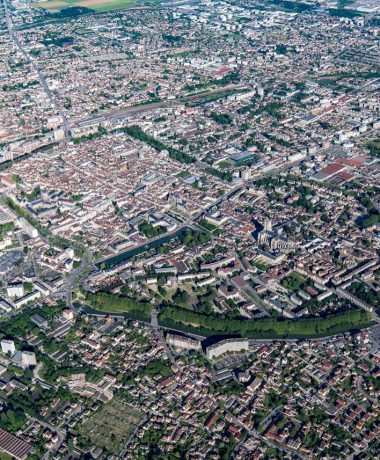Troyes is largely a 16th century city, with most of today’s buildings and layout dating from what locals call the “beautiful 16th century”.
This pivotal era, spanning both the Middle Ages and the Renaissance, has left a lasting legacy on Troyes as it is today.
Half-timbered houses and mansions
The city was ravaged by a great fire, but has been rebuilt to its original appearance, with buildings replacing their fire-damaged predecessors in exactly the same locations. The richest Troyens chose to build their homes from fire-resistant materials, and it is this decision that gives the city its marked contrast between poorer timber-framed dwellings and the stone-built mansions of the upper classes. This legacy has bestowed upon Troyes its unique identity.
The modern city is a direct descendant of its medieval predecessor, with its characteristic city centre in the shape of a champagne cork – a happy omen that predicted the meteoric rise of the local sparkling wine, grown in the immediate vicinity of Troyes, to world-renowned status.
Centuries-old city
Yet old towns and cities also have their drawbacks, and it is a status that is at once beneficial and restrictive. Troyes has been left to stew in its own juices for a long time, leading to dilapidation, discolouration and discomfort. At the end of the Second World War, a vast effort was required to rid the city of its so-called «unfit hovels» and slums.
Yet the sheer architectural quality of this ancient city brings it own set of duties and responsibilities. Such a beautiful city is duty-bound to conserve and protect its timeserved heritage for future generations. Just as Sisyphus was condemned to roll his rock endlessly up the mountain, so Troyes has a responsibility to make constant improvements to its city. There is always something that needs repairing or renovating.
The simple solution would have been to wipe the slate clean of the past and start afresh. However, in the 1960s, Troyes began to realise the undeniable value of its treasured heritage – a fact that had been largely ignored until then.
Troyens feel for their city
The need to preserve and restore the city is now accepted without question, and the renovation work conducted in recent decades has met with universal support. In fact, the pace of work has quickened in the last 20 years. A tell-tale sign of this support can be seen in the new-found pride that Troyens feel for their city, and their keenness to “show off ” its heritage to visitors, to exhibit its treasures and to reveal its secrets.
This venerable city is now living through its fourth golden age. In the 12th century, Troyes experienced rapid commercial and financial expansion, as well as an incredible intellectual and cultural explosion. In the 16th century, the city was an artistic hotbed, while the 19th century saw Troyes undergo an economic and industrial transformation, driven by the hosiery industry.
A hundred or perhaps a thousand years from now, historians may look back on the 21st century as a time when the city reconnected with its heritage and truly understood the value of its stunning architecture.
It is a resurrection that is happening right under our noses. Troyes has not yet completed its transformation, but it is already a place of such stunning beauty that we cannot resist the temptation to share just a few of its treasures with our readers.
Troyes is a place where the past retains strong echoes in the present, and where both past and present combine to create a radiant appearance that will last well into the future.






